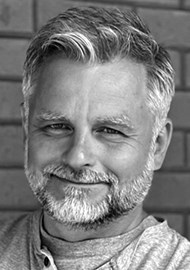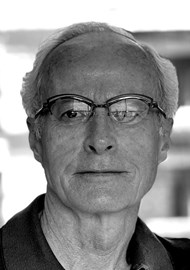Never let it be said that we don’t cover a wide range of topics. Camilla Dawson tells us about the crossover between swallowing in seals and in humans.
Rehabilitation of swallow is complex, informed by anatomical and physiological systems and behavioural science. Significant developments have been realised in the last 50 years, improving our understanding of the impact of disease on function of the upper aerodigestive tract. Throughout history, novel translational animal models have underpinned these developments, enhancing knowledge of biological systems across species.
We have created a unique research team to develop a comparative model between humans and the harbour seal (Phoca vitulina) in an effort to translate principles of human medicine to seal rehabilitation. This collaboration bridges basic scientists and clinicians across the areas of speech and language therapy, anatomy, cellular biology, veterinary medicine and pathology. Our explorations have informed understanding of cellular, anatomical, physiological and behavioural underpinnings of feeding and swallowing in the harbour seal. We began development of the first large animal feeding and swallowing model in semi-aquatic mammals by applying information used in the management of human adult and paediatric dysphagia.

Breathing and swallowing integration
The mammal upper airway has multiple functions, two of which are enabling breathing and swallowing. During human swallowing, ‘valve-like’ movements separate the airway and digestive tract through soft palate elevation sealing off the nasal passages, tongue base approximation to the pharyngeal wall to propel food and/or liquid toward the pharynx and upper oesophagus, anterior/superior hyolaryngeal displacement for airway closure, and upper oesophageal sphincter relaxation for bolus entry into the oesophagus.
Due to shared structures and function, continuous breathing pauses when swallowing. By nature, the body prioritises breathing over swallowing, and in most terrestrial mammals the airway is always open except during swallowing. The swallow essentially is inserted into a baseline ventilation pattern. Therefore, rapid synchronisation of upper aerodigestive tract structures, integrated neurological control, and a systematic breathe swallow pattern are necessary. In humans, the pattern is typically: 1) inhalation 2) initiation of expiration 3) swallow initiation 4) breathing pause 5) swallow completion 6) completion of expiration.
This process protects the airway by timing inhalation and expiration strategically. Inhalation occurs before the passage of food and/or liquid (bolus) through the pharynx, and expiration precedes and follows the swallow to expel potential early bolus escape and/or any post-swallow residue. Furthermore, the swallow is ideally timed during mid to low lung volumes, thereby minimising ventilatory phase disruption. This supports an efficient return to a ventilatory baseline, where ventilation timing and movements return to that which was occurring before the swallow. Intrinsic and/or extrinsic changes can alter breathe-swallow coordination, putting the airway at risk of aspiration.
Although under control of the central pattern generator in the medulla, breathing and swallowing are beholden to each other and must respond to changes in each respective system. The mammalian diet and the conditions under which it is consumed may vary, necessitating both breathing and swallowing modulation. In humans, increasing bolus size and/or viscosity leads to increases in breathing cessation duration, bolus transit time through the pharynx, and structural displacement speed and/or trajectory. Under physiologically challenging conditions such as respiratory illness requiring supportive ventilation (i.e. continuous positive airway pressure), laryngeal closure durations increase and pharyngeal contraction durations shorten. Bolus volume alterations can also shift the swallow event to the inspiratory rather than expiratory phase, elevating aspiration risk. For example, system modulation has been observed in full-term human infants where suck-swallow rates were higher with higher-flow teats, however these were complicated with more frequent inspiration following the swallow as compared to lower flow rates.
Reflexive swallowing
Early in life, mammals utilise a reflexive suck-swallow-breathe pattern while consuming a strictly liquid diet. As most rescued neonatal seals are orphaned before they wean from their mother, this necessitates gavage (tube) feeding. Compared to adults, human infant swallowing is characterised by obligate ‘nasal’ breathing, with the tongue occupying the entire oral cavity and buccal pads; the velum is positioned past the tip of the epiglottis (i.e. interdigitating with the epiglottis), with a shorter pharynx and a superiorly positioned larynx. Key milestone changes in aerodigestive tract anatomical and physiological development are marked by the human infant’s ability to consume a more texturally varied diet occurring around five months and then progressing with age. Regardless of species, typical maturation invariably leads to anatomical changes (e.g. laryngeal descent) alongside improved airway protection, breathe-swallow coordination and cortical development and solid diet transition. However, these systems may face interruption of their natural developmental processes due to environmental factors and/or illness, and therefore focused management is warranted.
Neonatal seals
Water to air breathing conversion was an early evolutionary development to separate the airway from digestive system, likely leading to similar anatomy across species. Seals are ‘periodic breathers’ and ‘semi-aquatic’ (inhabiting both land and water) and, when compared to humans, likely possess both similar and specialised structures in order to maintain airway protection during swallowing. Reliance on tube feeding is not unique to human medicine. Around the world, thousands of harbour seals are orphaned annually as a result of injury and/or abandonment shortly after birth, and undergo feeding rehabilitation, which includes gavage feeding, which is labour and cost intensive. In the harbour seal, our current understanding of multi-system integration during swallowing is minimal, as these animals consume their prey in aquatic environments.
Our work with this species is unique in that it focuses on swallowing – the mechanisms involved in moving prey (the bolus) from the oral cavity into the oesophagus. This is distinct from feeding, where the foci are finding, capturing, and moving prey from the environment into the oral cavity. In humans, feeding and swallowing rehabilitative practices facilitate transition from tube feeding to oral intake. To understand whether or not species-specific swallowing adaptions (anatomical and/or physiological) along with rehabilitation approaches have cross-species application, a comparative model needs to be explored and developed.
To begin, we created a comparative feeding taxonomy aligning early seal pup feeding behaviours with that of human infants [1]. Our early behavioural work highlighted the existence of similar primitive reflexes like rooting and sucking [2]. We also determined that, like humans, seals use sucking to self-sooth, particularly when ill and alone, even in the absence of maternal inputs. We adapted the human videofluoroscopic swallowing study procedure for use in seals [3]. While fluoroscopy has been used extensively in veterinary medicine and for other animals, to the best of our knowledge ours was the first attempt to do so with a semi-aquatic mammal. We made observations which informed our emerging understanding of the anatomical and physiological basis of airway protection during feeding and swallowing in this species. In doing so, we described a never-before-reported valve, a pair of modified corniculate cartilages in the posterior larynx which appear to actively move rostrally and approximate the vocal folds [4].
While it remains to be determined if this airway valving adaptation is unique to harbour seals specifically or phocids in general, it highlights a potential ability to protect the airway underwater without use of an epiglottis. Furthermore, as seals swallow in an aquatic environment which is a comparatively higher pressure than the conditions under which humans normally swallow, perhaps this and other adaptations yet to be discovered enable us to leverage this knowledge for use in patients undergoing surgical resections, airway reconstruction and for those swallowing while receiving positive airway pressure supportive ventilation.
Acknowledgement
The authors would like to acknowledge the contributions of a broader community to our work. We are grateful to the staff and volunteers at the Vancouver Aquarium’s Marine Mammal Rescue Centre along with the staff and trainees at the Swallowing Innovations Lab at the University of British Columbia. Without them, none of this would be possible.
References
1. Dawson C, Haulena M, Skoretz SA. Creating a cross-species conceptual framework: An analysis of spontaneous sucking in wild seal pups following feeding and swallowing rehabilitation [Abstract]. Dysphagia 2019;34(6):996.
2. Adams A, Vogl W, Dawson C, et al. Laryngeal and soft palate valving in the harbour seal (Phoca vitulina). J Exp Biol 2020; 223(Pt 20):jeb230201.
3. Skoretz SA, Adams A, Vogl AW, et al. Videofluoroscopy of the aerodigestive tract in Phoca vitulina: reshaping perspectives on translational medicine. Front Vet Sci 2024;11:1412173.
4. Nourbakhsh H, Adams A, Raverty S, et al. Microscopic anatomy of the upper aerodigestive tract in harbor seals (Phoca vitulina): Functional adaptations to swallowing. Anat Rec (Hoboken) 2023;306(5):947–59.
Declaration of competing interests: None declared.









